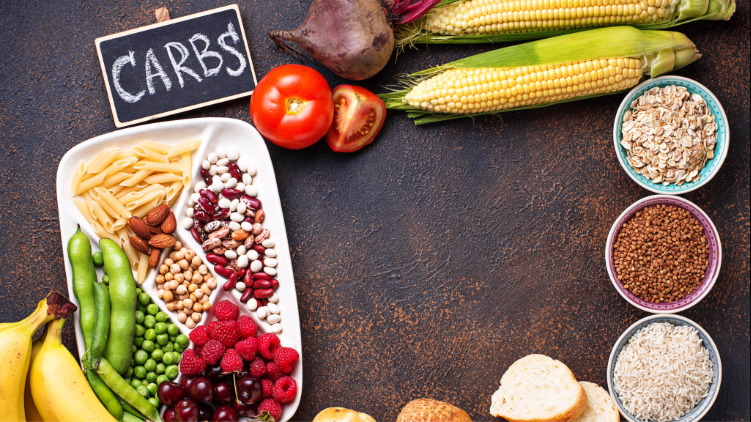
Are you tired of endless dieting without seeing results? Discover the transformative power of carb cycling—a dynamic approach that could change how you fuel your body. By strategically alternating between high-carb and low-carb days, you can maximize fat loss while boosting your energy levels. This method not only helps in shedding those stubborn pounds but also enhances your workout performance, keeping you motivated and focused. Whether you're a seasoned fitness enthusiast or just starting on your weight loss journey, understanding the secrets of carb cycling can help you break through plateaus and achieve your goals. Dive into this comprehensive guide and unveil the science behind this popular dieting strategy, empowering you to transform your meals and lifestyle for optimal results. Ready to unlock your potential? Let’s explore how carb cycling can become your secret weapon in the quest for a healthier, more vibrant you!

Carb cycling is a nutritional strategy that involves varying your carbohydrate intake on different days to support fat loss, improve energy levels, and enhance overall performance. Rather than following a consistently low-carb or high-carb diet, this method alternates between days of higher and lower carbohydrate consumption. The goal is to take advantage of your body’s natural responses to carbs—such as insulin production and energy storage—while promoting metabolic flexibility and long-term sustainability.
The core idea behind carb cycling is to align your carbohydrate intake with your physical activity. On days with intense workouts, eating more carbohydrates helps fuel performance, replenish muscle glycogen, and support recovery. On rest or low-activity days, reducing carb intake can encourage the body to burn stored fat and improve insulin sensitivity. This alternating pattern helps prevent the metabolic slowdown that can occur with long-term calorie or carb restriction.
What makes carb cycling particularly appealing is its adaptability. It can be customized to suit individual goals—whether that's fat loss, muscle gain, or maintaining athletic performance. For example, someone focused on losing weight may include more low-carb days in their plan, while an athlete might prioritize more high-carb days to meet their energy demands. This flexibility makes carb cycling a practical and less restrictive option for those seeking long-term results without rigid dieting.
Benefits of Carb Cycling for Energy and Performance
One of the key benefits of carb cycling is the ability to maintain high energy levels and optimize physical performance. High-carb days provide the necessary fuel for demanding workouts, ensuring that you have enough energy to perform at your best. Carbohydrates are the body's preferred source of energy for high-intensity activities, and adequate intake can prevent fatigue, enhance endurance, and improve overall exercise performance.
Incorporating carb cycling into your routine can also support muscle recovery and growth. After intense training sessions, your muscles require glycogen to repair and rebuild. High-carb days replenish these glycogen stores, aiding in recovery and reducing muscle soreness. This can be particularly beneficial for athletes and fitness enthusiasts who engage in frequent and strenuous workouts.
Moreover, carb cycling can help prevent the negative effects of chronic low-carb diets, such as decreased thyroid function and metabolic slowdown. By periodically reintroducing carbohydrates, you can maintain metabolic health and avoid the pitfalls of long-term carb restriction. This balanced approach ensures that you reap the benefits of both high and low-carb days, keeping your energy levels stable and your metabolism functioning optimally.

Designing an effective carb cycling meal plan requires a thoughtful approach that considers your personal goals, physical activity levels, and food preferences. The first step is to decide how many high-carb and low-carb days you'll include in your weekly routine. This will depend on factors like your fitness schedule, weight management targets, and how your body responds to different macronutrient ratios.
On high-carb days, your focus should be on consuming complex, nutrient-dense carbohydrates that provide lasting energy and support recovery. Choose whole foods such as brown rice, quinoa, oats, legumes, starchy vegetables (like sweet potatoes or corn), and fruits. These options deliver essential vitamins, minerals, and fiber to keep your body functioning optimally.
To create balanced meals, combine these carbs with lean sources of protein—such as chicken, turkey, tofu, or eggs—and healthy fats like avocado, olive oil, or nuts. Some high-carb meal ideas include:
On low-carb days, reduce your carbohydrate intake and increase your intake of protein and healthy fats to encourage fat burning and keep you feeling satisfied. Prioritize foods like lean meats, fish, eggs, nuts, seeds, and non-starchy vegetables (such as leafy greens, cucumbers, peppers, and zucchini).
Meals on low-carb days might include:
Throughout the week, aim for variety to ensure you're getting a broad range of nutrients. Stay well-hydrated, and listen to your body’s signals to fine-tune your plan as needed. Carb cycling works best when it’s both structured and adaptable to your lifestyle.
To get the most out of a carb cycling routine, choosing the right foods is essential. The quality of your food not only impacts your energy and performance but also determines how effectively your body responds to the cycling process.
On high-carb days, aim for complex carbohydrates that provide steady energy and are rich in nutrients. These help replenish glycogen stores and support recovery, especially after workouts.
Ideal choices include:
Avoid: processed foods like white bread, pastries, sugary cereals, and soda, as they can spike your blood sugar and lead to energy crashes.
On low-carb days, the focus shifts to high-protein and healthy fat sources that promote fat burning and keep hunger in check. Great food options include:
Avoid: carb-heavy foods like pasta, bread, white rice, and sugary snacks, as they can interfere with fat metabolism and reduce the benefits of low-carb days.
No matter the day, incorporating nutrient-dense foods ensures your body receives the vitamins, minerals, and antioxidants it needs. Great all-around choices include:
Stay well-hydrated, and consider adding supplements like omega-3s, magnesium, or probiotics if needed to support digestion, inflammation control, and overall wellness.
When it comes to carb cycling you do need some kind of extra help through which you will be able to maintain your energy levels and stay fit. This is where Revolution Nutrition comes into action. There are a lot of different items and products that are offering which can help in maintaining your health and fitness. They have different kinds of supplements and pre and post workouts that can help you with keeping the energy levels. Hence we hope you will check them out.
Carb cycling is a dynamic and flexible dietary strategy that can help you achieve maximum fat loss, energy, and overall health. By strategically alternating between high-carb and low-carb days, you can optimize your body's metabolism, fuel your workouts, and enhance muscle recovery. This approach offers a balanced way to manage your diet without the restrictions of traditional dieting methods.